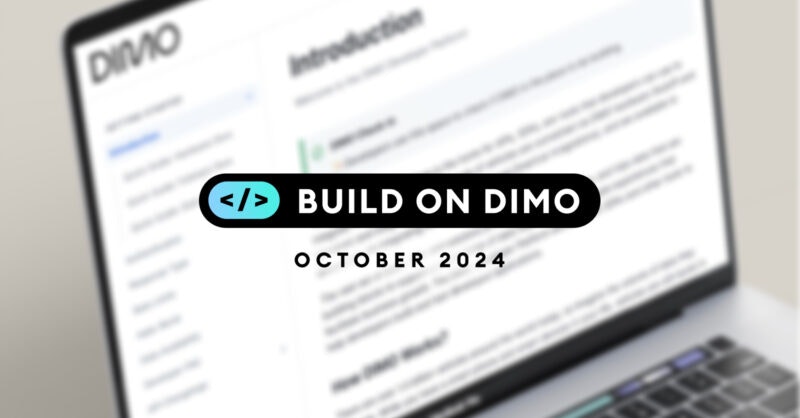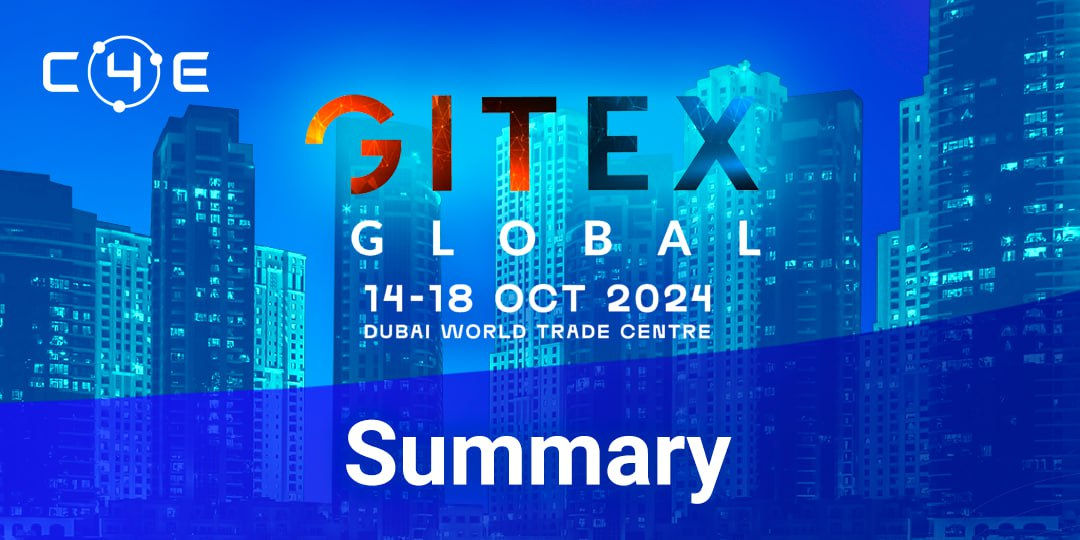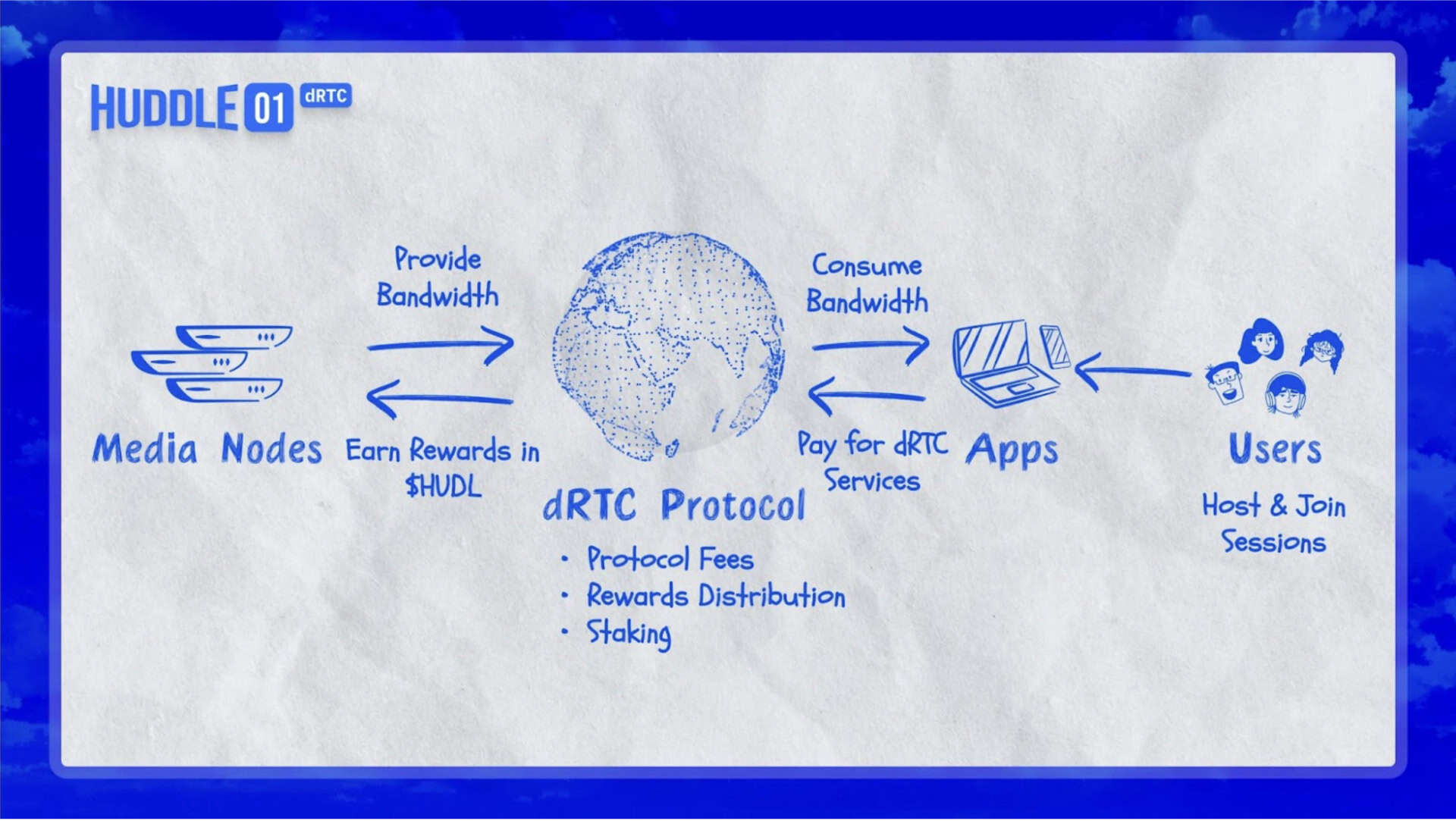Latest DePIN Funding News

a year ago
Filecoin Expands Offerings with New Web Services to Target AI Market
Filecoin, a prominent player in the blockchain space, is set to make significant strides beyond its traditional focus on decentralized storage. The company is reportedly launching a new product called Filecoin Web Services, which aims to create a decentralized cloud marketplace. This strategic move, highlighted in a recent Messari report, positions Filecoin to delve into AI-centered products, thereby broadening its offerings and potentially enhancing the demand for its FIL cryptocurrency. The report indicates that this expansion will facilitate easier access to decentralized solutions for developers, aligning with current trends in AI and decentralized infrastructure within the blockchain ecosystem.
Despite the expansion, Filecoin's core service of decentralized storage continues to show robust utilization. In Q3 2024, storage utilization surged to 29.6%, a significant increase from just 4.1% in Q1 2023. This growth can be attributed to a rise in the number of large dataset clients, which now totals 518, each subscribing to over 1,000 TiB. However, the overall storage capacity has seen a decline, dropping from 13.8 billion EiB to 5.4 billion EiB during the same period. This dynamic suggests that while Filecoin is expanding its service offerings, it is also navigating challenges related to storage capacity.
In the broader cryptocurrency market, FIL has struggled to maintain bullish momentum, trading at $3.59 after a notable decline of 10.21% over the past week. This downturn has overshadowed recent gains, as investor interest has shifted towards other narratives, particularly those involving memecoins and AI. As Filecoin ventures into new growth segments, the long-term impact on its competitiveness and the demand for FIL remains to be seen. While the immediate outlook may be challenging, the expansion into AI and decentralized services could ultimately enhance Filecoin's attractiveness to investors in the future.

a year ago
Emerging Crypto Trends for 2024: A Look Ahead
The crypto market is experiencing a surge of optimism as we move into 2024, with Bitcoin reaching new all-time highs and Ethereum receiving regulatory approvals for spot ETH ETFs. This positive sentiment has sparked discussions about the future of the crypto landscape, highlighting key narratives that are expected to shape the industry in the coming years. Among these trends, decentralized social platforms, restaking, data availability layers, decentralized physical infrastructure networks (DePIN), tokenization of real-world assets (RWA), artificial intelligence (AI), and political memecoins are emerging as significant drivers of both buzz and utility.
Decentralized social platforms are gaining traction as they offer users censorship-free environments and control over their data. Platforms like Warpcast and Friend.tech are leading this movement, allowing users to migrate their content and followers seamlessly. Meanwhile, restaking, a concept pioneered by EigenLayer, allows validators to lock up liquid staking tokens as collateral, enhancing the security of the Ethereum network while enabling token holders to earn additional yields. This trend has led to the emergence of several competitors in the restaking space, further diversifying the market.
The tokenization of real-world assets is another trend that is gaining momentum, with major players like BlackRock entering the space. By representing assets such as real estate and fine art as digital tokens, tokenization facilitates fractional ownership and enhances liquidity. Additionally, the AI narrative continues to grow, with projects like Fetch.ai and Bittensor focusing on creating decentralized AI solutions. Lastly, political memecoins have captured the attention of investors as they satirize political figures, reflecting the speculative nature of the crypto market. As 2024 unfolds, these narratives will likely continue to evolve and influence the crypto ecosystem significantly.

a year ago
DIMO Network: Empowering Developers and Innovating the Automotive Industry
In the aftermath of the ETHOnline hackathon, the DIMO developer community is buzzing with excitement and innovation. Developers are actively engaging with the DIMO team, sharing ideas and proposals for continuous development on the platform. Notably, one developer is collaborating on a data insight layer that promises to enhance the experience for all developers, while another is working on a no-code solution for DIMO APIs. Additionally, many developers have applied for the DIMO Ignite Grants Program, seeking funding for their innovative business proposals. This vibrant developer activity underscores the core mission behind the DIMO Network: to foster a thriving ecosystem for developers.
As the DIMO team progresses with their developer roadmap, significant milestones are being achieved. The upcoming launch of the Global Accounts project, implemented as Accounts API, is a key highlight. This RESTful API service will facilitate the creation of DIMO accounts, allowing users to register a signer account and provision a smart contract wallet. With a focus on user security, the signer wallet is protected by Turnkey’s policy engine, ensuring that only the end user has control. Furthermore, the integration of a fiat-to-crypto on-ramp using Stripe will streamline transactions, making it easier for users to engage with the DIMO ecosystem.
The introduction of the DIMO Transactions SDK marks another major advancement, providing developers with the tools to execute on-chain transactions seamlessly. This SDK supports both React Native and web applications, enabling developers to send DIMO tokens, mint vehicles, and manage ownership permissions without switching between applications. By allowing applications to sponsor on-chain transactions, the DIMO Transactions SDK alleviates concerns about gas fees for end users. As the DIMO Engineering team continues to innovate and revolutionize the automotive industry, the community is encouraged to join the conversation and contribute to the development of this exciting network.

a year ago
Studio369 Moves MetalCore to Solana Blockchain for Enhanced Gaming Experience
Game development company Studio369 has announced the migration of its mech shooter title MetalCore to the Solana blockchain, aiming to enhance the gaming experience through faster on-chain transactions. As of October 24, the Solana blockchain is processing an impressive average of about 3,000 transactions per second, a key performance metric that underscores its capabilities. MetalCore will leverage Solana Labs' GameShift platform, which integrates a storefront and payment systems for in-game purchases. This free-to-play open-world game features both player-versus-player (PvP) and player-versus-environment (PvE) battles, allowing players to acquire assets from defeated opponents and convert them into Web3 assets for trading.
The migration to Solana comes as the network has been attracting various protocols looking to improve scalability and reduce costs. Studio369's decision reflects a broader trend, as other projects like MetaBlox's Roam network and the decentralized wireless communications protocol Helium have also transitioned to Solana for its faster transaction speeds and scalability. With the gaming sector increasingly gravitating towards blockchain technology, Solana's infrastructure is positioned to support these developments effectively.
Despite its advantages, Solana has faced challenges, including significant periods of downtime that have raised concerns about its reliability. The latest outage, which lasted about five hours, occurred on February 6, 2024. In response to these issues, the Solana Foundation is working on the Firedancer upgrade, with a full version expected in 2025 and interim updates to manage the growing network activity. As Solana continues to evolve, it remains a focal point for gaming and decentralized infrastructure projects seeking robust blockchain solutions.

a year ago
Vitalik Buterin Outlines Ethereum's Path to a Unified Ecosystem
Ethereum co-founder Vitalik Buterin has recently highlighted the significant challenges facing the Ethereum network, particularly the urgent need for a unified ecosystem. In his latest insights, he discusses the future goals of Ethereum, especially during an upcoming phase known as "The Surge." This phase aims to enhance scalability, enabling swift cross-chain transfers and creating a more cohesive user experience. Buterin points out that Ethereum's biggest hurdle is its fragmented ecosystem, which currently consists of various Layer 2 (L2) solutions, each with unique features. He envisions a future where these solutions achieve interoperability, allowing them to function as a single, cohesive unit rather than 34 separate blockchains, ultimately fostering innovation and improving user experience.
The ambitious goals of "The Surge" include achieving over 100,000 transactions per second (TPS) across both Layer 1 (L1) and Layer 2 solutions. However, Buterin emphasizes that this scalability must not compromise decentralization and security, which are core properties of Ethereum. He advocates for the integration of L2 solutions that maintain trustlessness, openness, and resistance to censorship. Additionally, Buterin stresses the importance of scaling the base chain, as a highly scalable L2 could pose risks if L1 struggles to process transactions. Instead of merely increasing the gas limit, he proposes making specific computations cheaper while preserving decentralization, suggesting improvements like multidimensional gas pricing.
Furthermore, Buterin underscores the necessity of enhancing user experience within the Ethereum ecosystem. He believes that using L2 networks should feel seamless, allowing users to send tokens across chains without the technical burden of manual bridging. As Ethereum transitions from a monolithic roadmap to a rollup-centric approach, Buterin acknowledges the unique challenges this shift has introduced. The recent Dencun upgrade has been pivotal in scaling Ethereum, but it also raises concerns about siphoning users from the mainnet. Ultimately, Buterin's vision for Ethereum is to address these challenges while preserving its foundational values, ensuring that the evolution towards an L2-dominated ecosystem does not compromise what makes Ethereum unique.

a year ago
C4E and Grenton Showcase Blockchain and AI Solutions at Gitex Global Conference
Last week, the Gitex Global Conference took place from October 14th to 18th in Dubai, UAE, where our team had the opportunity to collaborate with our partner Grenton. This annual event serves as a significant platform for fintech decision-makers to connect, share ideas, and network. Located at the Dubai World Trade Centre, Gitex Global attracted tens of thousands of participants, including entrepreneurs, investors, and industry insiders. Our focus during the conference was to showcase the integration of blockchain technology with AI and Smart Home solutions, emphasizing their potential benefits for sustainability and the development of smart cities.
During the event, we engaged with key decision-makers and investors, presenting how our joint solutions can enhance community engagement and facility management through innovative technologies. Notably, Bartlomiej Gierszyn, CEO of Grenton, delivered a presentation during the Tech Talks segment of Gitex 2024. He highlighted the aggregation of data from smart homes for notifications and alerts, the role of AI in facility management, and the application of blockchain for fostering community engagement. This presentation not only provided valuable insights but also sparked significant interest among potential investors and attendees.
Overall, our experience at Gitex Global was highly productive, allowing us to expand our network and generate interest in our collaborative solutions with Grenton. We believe that the conference could have been even more beneficial with a longer duration, as the discussions and networking opportunities were incredibly valuable. To stay updated on our developments and future initiatives, we encourage following our social media channels.

a year ago
XProtocol Announces Launch of Crypto-Powered Android Phone XForge
XProtocol has officially announced the launch date for its innovative crypto-powered Android phone, the XForge, set for October 30, 2024. This entertainment-focused Ethereum layer-3 network is offering a pre-sale of 10,000 units, each priced at $299. The launch follows a successful Xardian node sale aimed at empowering and rewarding communities. According to Dragonix, a contributor to XProtocol, the initial pricing is expected to increase after the first batch. Each phone will also come with free Xardian Nodes, allowing users to participate in the DePIN network and earn various cryptocurrency-based incentives directly from their devices.
In addition to the phone launch, XProtocol has completed multiple fundraising rounds totaling $5.2 million, with participation from notable investors such as Dragonfly Capital, Coinfund, and Razer. The company’s unique proposition lies in its use of Base superchain technology, which provides a scalable and developer-friendly platform for entertainment and gaming projects. XProtocol is compatible with all Ethereum Virtual Machine (EVM) projects, facilitating easy migration and offering tools for developers. The upcoming dApp store on the phone will serve as a gateway for users to access web3 applications built on the XProtocol superchain.
The XForge is designed with high-end specifications tailored for gaming, featuring an Octa-Core CPU, Dual Nano SIM capability, a 6.67” AMOLED display, 8GB of RAM, and 256GB of storage. The inclusion of Xardian nodes aims to enhance network decentralization, with operators earning rewards for their participation in the consensus process. Furthermore, XProtocol has locked in 20% of its total token supply for node license holders, to be distributed over 36 months following the mainnet launch later this year. With a team experienced in web3 gaming, XProtocol is poised to revolutionize blockchain-based gaming, enabling creators to develop and scale consumer-focused products effectively.

a year ago
The Rise of Crypto + AI: A New Frontier in Web3 Investment
In recent weeks, the convergence of cryptocurrency and artificial intelligence (AI) has captured the attention of Web3 venture capital firms, signaling a significant shift in investment focus. Coinbase Ventures, a prominent player in the crypto space, has published an official thesis outlining its commitment to Crypto + AI projects. Hoolie Tejwani, head of Coinbase Ventures, believes that blockchain and generative AI will intertwine to form the foundation of our digital lives. This shift is not isolated; other venture capital firms, such as CoinFund and a16z, are also investing heavily in this emerging sector, with a reported $213 million directed towards AI projects in the third quarter of 2024.
Coinbase Ventures categorizes the Crypto + AI landscape into three primary buckets. The first bucket focuses on AI agents that utilize cryptocurrency for transactions, suggesting a future where AI handles various tasks and requires a seamless payment method. Projects like Skyfire and Payman are already exploring this concept, with Payman enabling AI agents to transact with humans. The second bucket encompasses decentralized AI systems, emphasizing the importance of data in training AI. Initiatives like Vana are pioneering ways for users to monetize their data while maintaining privacy, potentially revolutionizing how AI is trained and governed.
The third bucket delves into on-chain AI, where AI generates software code and smart contracts in real-time. This innovative approach could redefine how applications are built and operated on blockchain networks. However, the rapid proliferation of Crypto + AI projects raises questions about their substance and viability. While some view this integration as a necessary evolution, others caution against the hype surrounding it. Ultimately, the future of Crypto + AI will depend on its ability to provide tangible benefits and empower users, rather than merely riding the wave of technological trends.

a year ago
Huddle01 Launches Node Sale to Transform Decentralized Communications
Huddle01, a pioneer in decentralized real-time communications (dRTC), has launched a whitelist for its upcoming node sale, aiming to revolutionize audio and video conferencing. This initiative marks the first Decentralized Physical Infrastructure Network (DePIN) specifically designed for real-time communication. By leveraging unused internet bandwidth through node operators, Huddle01 enables seamless communication that can rival established platforms like Zoom and Google Meet. Since its inception, Huddle01 has facilitated over 7 million minutes of meetings across more than 100,000 events, and the addition of new nodes is expected to enhance connectivity in emerging markets while allowing node license holders to earn rewards.
The Huddle01 Media Nodes serve as the backbone of this innovative network, addressing the high operational costs and latency issues associated with centralized RTC networks. By significantly reducing the reliance on traditional data centers, Huddle01 can lower developers' server costs for audio and video calls by up to 95% compared to conventional services like AWS. CEO Ayush Ranjan emphasizes that the media nodes will improve latency, particularly in regions with a dense cluster of nodes, thus providing a competitive edge over existing web2 solutions. The platform's native app, Huddle01 Meet, integrates web3 tools, allowing users to connect wallets and utilize NFT avatars, further enhancing the user experience.
The node sale will offer 46,900 Huddle Media Nodes, starting at $320 each, and will occur in two phases. The first phase will see 20,000 nodes available for purchase, with participants receiving an NFT key upon purchase. The sale is structured to reward early participants with higher returns. Additionally, an incentivized testnet will launch shortly after the sale, rewarding active node holders with $HUDL tokens. With a total supply of 200 million $HUDL, the project aims to engage a broad user base and enhance the decentralized communication landscape.

a year ago
Insights from the First Two Weeks of the Incentivized Testnet
The first two weeks of the Incentivized Testnet have provided valuable insights into the distribution of rewards among relays, revealing trends that are crucial for optimizing the network's performance. Utilizing data from the Smartweave Distribution Contract, the analysis indicates that the current reward emission rate is at 25% of what will be seen on the mainnet. On average, relays are earning 0.4 tokens per day, with those in the upper quartile earning 0.75 tokens. A significant correlation has been observed between the rewards and the bandwidth of relays, suggesting that higher bandwidth directly influences the amount of tokens distributed. This relationship is vital as it aligns with the network's primary need for increased capacity, particularly for exit nodes that handle more traffic.
Geolocation data has also been made available, showcasing the distribution of relays across various regions. The mapping of relays onto H3 hexagons highlights areas with dense relay populations, indicating potential overlaps in server providers. The introduction of geolocation multipliers aims to incentivize diversity by penalizing relays in overcrowded IP ranges, thus encouraging operators to utilize more residential IPs. This strategy not only promotes a more balanced network but also addresses the risk of malicious actors attempting to de-anonymize users by ensuring a wider geographical spread of relays.
Another critical aspect of the incentive structure is the introduction of uptime rewards, which will be integrated into the upcoming AO distribution logic. This initiative aims to create a fairer reward system by recognizing relays that maintain consistent uptime, thereby encouraging participation from smaller operators. As the network evolves, it is essential to engage in discussions about its future direction, focusing on outreach, education, and governance to foster a resilient and diverse relay ecosystem. The journey for Anyone is just beginning, and these insights will guide its development moving forward.
Signup for latest DePIN news and updates